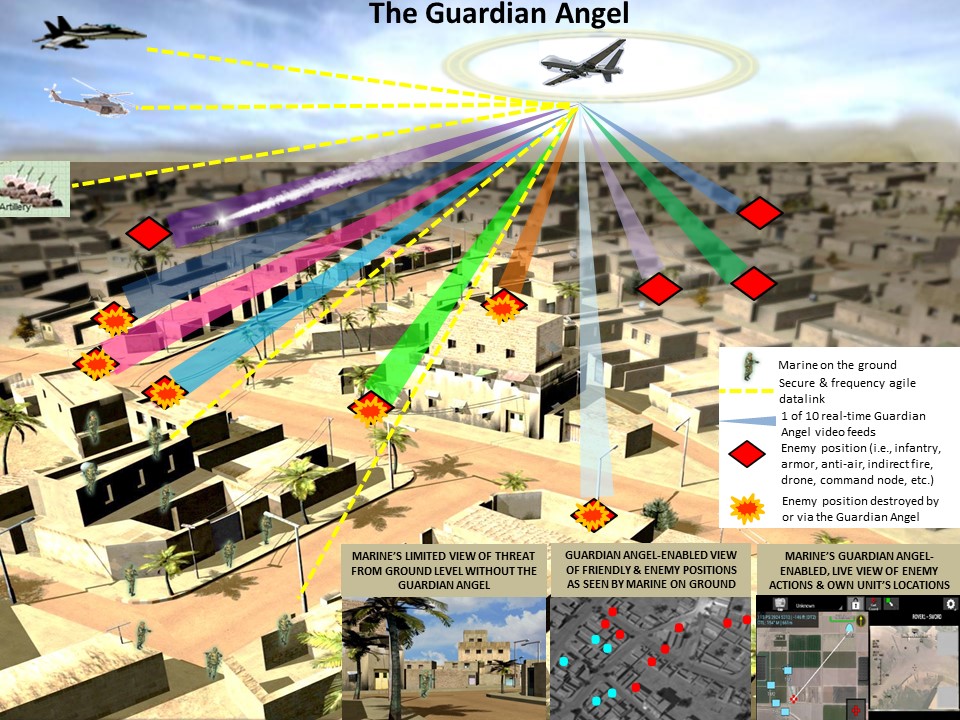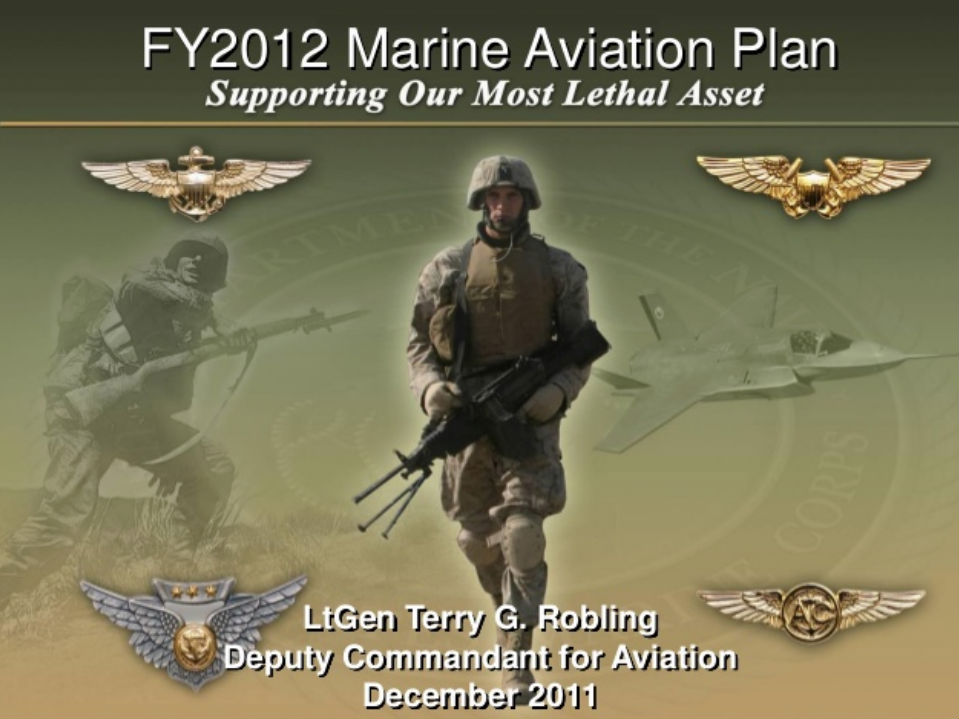Secretary Mattis’ “Guardian Angel” and How Marine Corps Aviation Can Get Back on Target
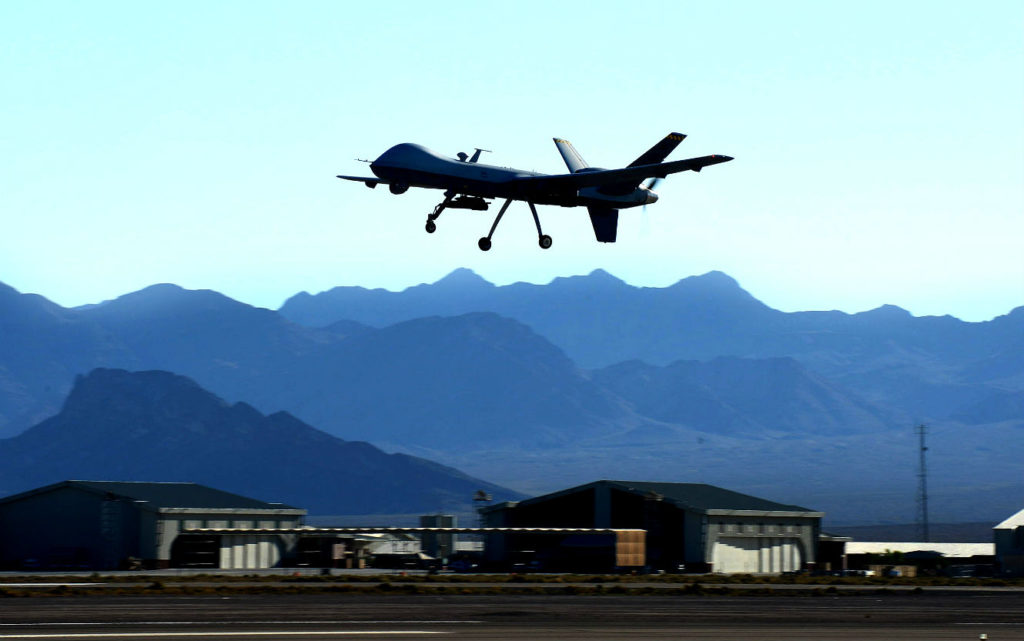
“Humanity is now a predominantly urban species,” observed the authors of last year’s Joint Operating Environment assessment. The Marine Corps’ operating concept added months later that urban operations are “the most likely to occur and the most dangerous.” This is just a small sample of the avalanche of official documents and non-official analysis that has tackled the military risks posed by dense and under-developed cities.
Imagine someone who is only a high school student today who, in three years, finds himself a Marine squad leader deployed on short notice to a city wracked by violence. Most of his squad is fixed in an alleyway that spills into a street, where one of his marines lies wounded in the middle. Another of his marines made it a few steps further before he was shot as the platoon moved to secure a building across the street. Every attempt to rescue the wounded marines is met by hundreds of enemy bullets. The squad leader’s marines are bleeding out. He has never experienced anything close to this level of pressure in his life.
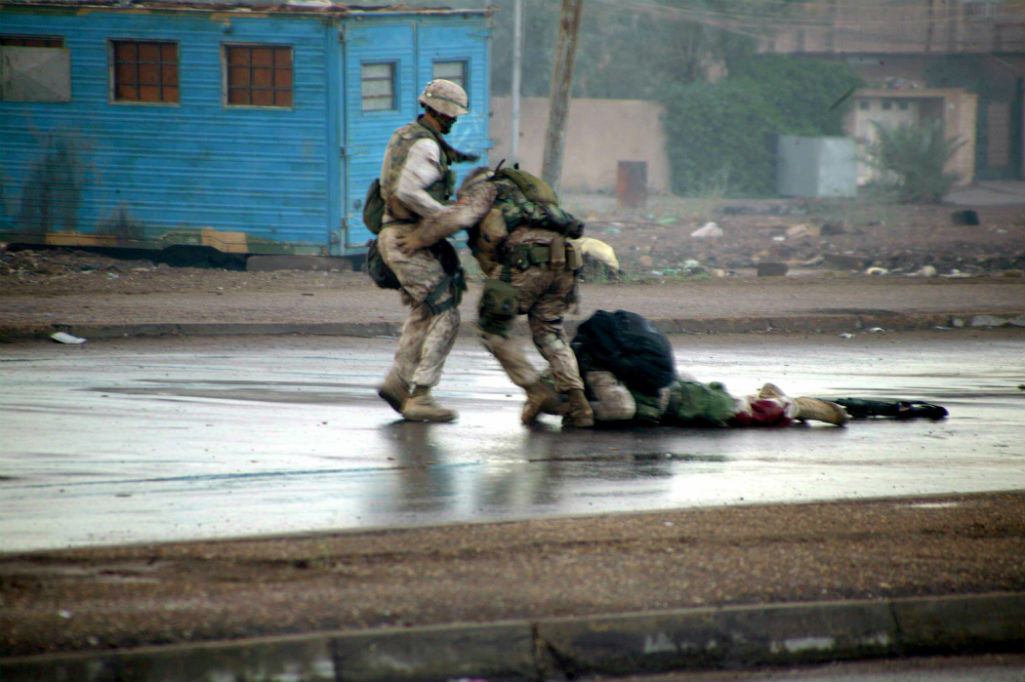
An American aircraft – with “Marines” painted on the sides – can be overhead to help. Take a moment to list the characteristics you would want this aircraft to have. Maybe your list will be similar to mine. As an American who has had the privilege to serve marines in multiple infantry units in urban combat in Iraq and Afghanistan, not a day goes by where I don’t think intensely about this subject. Here’s my list:
- Be there, now! Persistence is the first word that comes to mind. Not for minutes or hours, but for as long as the unit is on the ground, even if this means a day or more.
- Communicate securely and provide the unit with a persistent airborne network bridge for sharing mission critical information. This is essential for increasing situational awareness, preventing fratricide, and expediting fire support.
- Be deadly. This aircraft should be able to fire a variety of precision-guided munitions at the enemy, even if they are within 15 meters of marines.
- Be more than just deadly. This aircraft needs to deliver a range of what the military calls “non-kinetic” functions as well. For example, it should be able to interfere with enemy communications, including their unmanned aircraft. Marines on the ground should be able to direct these capabilities via persistent close air support
- Provide real-time, multi–spectral, and wide area motion imagery to intelligence and fire support specialists supporting the unit. This should include the ability to detect and attack enemy drone locations, indirect fire positions, and mobile targets.
- It should be able to serve as an airborne quarterback for supporting assets helping the unit. It should, for example, be able to provide real-time, updated imagery, enemy target coordinates, and friendly position location information for other aircraft and supporting artillery and mortar units.
- It should be able to fly high. If this aircraft can operate at altitudes above 20,000 feet, it will be able to avoid the most likely man-portable air-defense threats.
- It should also be able to fly from expeditionary airfields to maximize support options.
- And finally, it should be able to do all of this in training, again and again, day after day, and night after night before the unit deploys, just like a Marine Air-Ground Task Force (MAGTF) should be able to do.
In short, this aircraft should be a “Guardian Angel,” or what Ben Brewster called a “Grunt-Angel.” Unfortunately, the Marine Corps doesn’t have one. The technology exists. Indeed, aircraft that can do all this already exist. Such aircraft cost far less per unit and are cheaper to operate than any manned close air support aircraft in the U.S. arsenal today. But the Marine Corps has none. It won’t have any in 2020 or even 2025, unless senior leaders get involved and change course.
Failing the Marine on the Ground: How Did This Happen?
At this point, some readers may be confused. A few of you might be thinking, “Isn’t the Marine Corps designed such that everything in the organization is focused on supporting the ground combat element, including and especially the infantry squad fighting on the street?” You might wonder why Grunt-Angels aren’t already flying above these squads already.
These are reasonable questions. After all, Lt. Col. Alfred A. Cunningham, the first Marine aviator, made clear in 1920 why Marine aviation exists: “It is fully realized that the only excuse for aviation … is its usefulness in assisting the troops on the ground.” Joint doctrine, as early as 1986, reinforced the same: “The primary mission of the MAGTF air combat element is the support of the MAGTF ground element.” The most recent Marine Corps Doctrinal Publication 1-0 continues to emphasize this same primary mission for the Marine air combat element. The most current Joint Publication 1, Doctrine for the Armed Forces of the United States does the same.
What’s the problem, then?
In reading the 2017 Marine Aviation Plan (AVPLAN), one gets the sense that something important is missing from its 286 pages: an emphasis on Marine Aviation’s “primary mission.” The ground combat element is barely mentioned at all. This is a marked contrast with the 2012 AVPLAN which features a Marine infantryman on the cover under the words “Supporting Our Most Lethal Asset.” The 2012 AVPLAN notes in its opening comments: “As it has been for the 100 years since our founding, Marine aviation’s number one priority is to support the ground force in winning our nation’s wars.”
This clarity of Marine Aviation’s “primary mission” is gone today. It has been replaced with something else.
If this situation weren’t troubling enough, in a six-page May 2017 Marine Corps Gazette article about Marine aviation, the deputy commandant for aviation emphasized not once, but twice, “The F-35B has proven that we have a war-winning capability in our hands” — without even once mentioning anything to do with supporting marines on the ground. Nowhere in the article can one even find the words “ground combat element,” “infantry,” “grunt,” “combat engineer,” “armor,” “artillery,” or “Marine on the ground.” Perhaps this ahistorical belief in a jet’s “war-winning” capability, combined with a loss of primary focus on the ground combat element, has led aviation leadership to wrongly overlook the Guardian Angel.
If this trend continues, one can’t help but wonder if future “Marine Aviators of the Year” will be awarded in honor of the airpower advocates such as Giulio Douhet, Billy Mitchell, and John Warden instead of Alfred Cunningham.
Given such foundation-shaking thinking coming from the top of Marine Aviation, perhaps it is no surprise that ground combat element marines don’t have the support they need, nor are they slated to anytime soon, despite the Marine Corps Operating Concept’s specific guidance to provide it. Regardless, this tragic reality must be addressed head-on. The reasons to do so are many, including, as Rep. Niki Tsongas recently highlighted when expressing her concerns about Marine Corps budgeting priorities, “the Marine Corps’ mission to be the premiere force-in-readiness and the historical reliance that the nation has placed on the Marine Corps’ role in ground combat.” This reliance today includes the Marine Corps providing almost one-third of the United States’ total active-duty ground combat capability.
Enter Secretary Mattis and the Guardian Angel
Secretary of Defense Jim Mattis, himself a legendary member of the Marine Corps, has his own history with what he called the “Guardian Angel.” In October 2006, while serving as the commanding general of the First Marine Expeditionary Force (I MEF), then-Lt. Gen. Mattis issued Policy Letter 04-06: “I MEF Rules for Force Protection,” often referred to as the “Flat Ass Rules.” At the time, marines were in near constant, intense and close-quarters combat in urban areas such as Fallujah, Qaim, Najaf, Habbaniyah, and Ramadi. At the same time, the fierce summer 2006 battle between the Israeli Defense Force and Hizballah in urban areas such as Bint Jbeil was a topic of frequent discussion.
Policy Letter 04-06 emphasized that I MEF would use “the Guardian Angel construct as our overarching force protection policy.” The letter went on to explain the Guardian Angel as “a mature, alert, and hidden individual” possessing an ambush mentality focused on protecting his unit. Additional requirements for those serving as Guardian Angels included “being imaged through the use of deadly force” and possessing the appropriate communications equipment to warn protected units in the event of hostile activity or action. Moreover, the Guardian Angel was to ensure that “any attempt to attack us will result in the swift and immediate death of the enemy threat.”
As a young Marine officer, I received the general’s guidance on countless occasions and read Policy Letter 04-06 in detail, numerous times. No doubt the boss’ intent was clear: have marines constantly hidden, in over-watch, in continuous communications with the protected unit, ready to precisely kill our adversaries.
This may sound simple enough. However, looking at the dense urban landscape in places like Baghdad’s Sadr City, Najaf, and Fallujah, one quickly realizes how difficult it is to carry this out, especially when most of the buildings in these cities have people in them, no small number of whom wanted to see the Marines fail. Regardless, marines did their very best to carry out the general’s guidance.
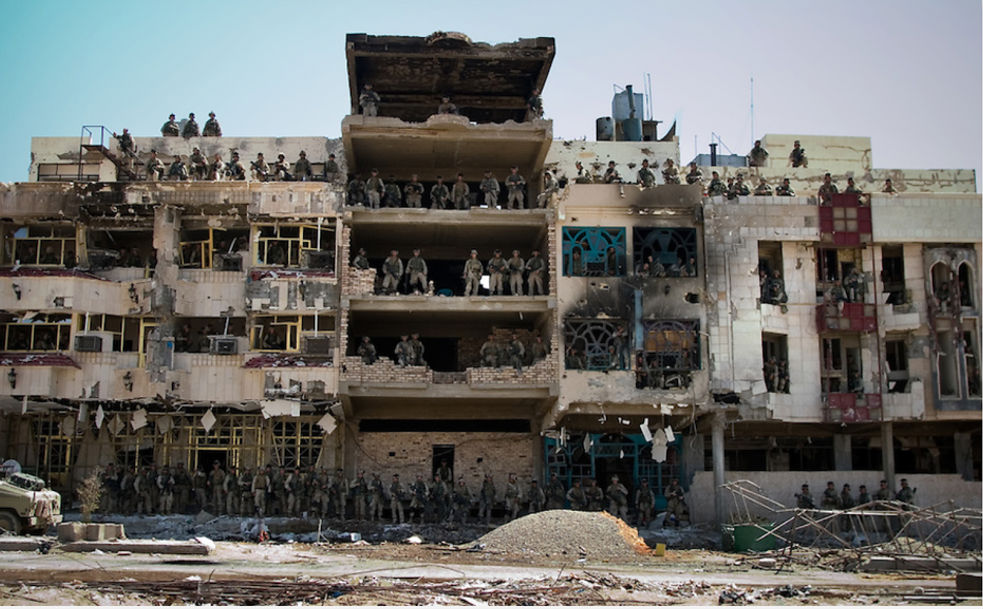
Reflecting on this guidance 11 years later, alongside forecasts about even more demanding urban warfare yet to come, one wonders if today there is a better way to achieve Secretary Mattis’ intent. The answer, of course, is yes. Marines who have served or are serving in close-combat units have explained how. In short, when implementing the Guardian Angel concept, leverage Marine Aviation’s “primary mission” to support the ground combat element, not just marines on the ground seeking to move into elevated positions in the urban landscape. As an example, an infantry battalion forward air controller, who served in and around the urban areas in Marjah in 2011, stated the following when asked about the best aviation platform in support of his unit:
The deadliest was the UK (MQ-9) Reaper. This was due to extended time on-station, diverse precision-guided munition load-out, high fidelity sensor, video downlink capability, reliable communications, imagery analyst as part of the flight crew, and stable and reliable terminal guidance operations.
More recently, in August 2016, after observing a Reaper’s capabilities in support of a distributed, experimental infantry company, to include against enemy counter-attacks, an infantry captain stated, “The MQ-9 provided persistent ISR (intelligence, surveillance, and reconnaissance) and served as a guardian angel to prevent enemy reinforcements.” The infantry captain in charge of this experimental company, who had previously served as a platoon commander in Sangin District, Afghanistan, in one of the Marine Corps’ most challenging combat experiences since 2001, got straight to the point when describing what the MQ-9 meant to his unit:
Having the Reaper on-station was the most important thing … it is something we need right now… we would not have been successful without it, hands down.
These marines’ insights are further supported by 13 years’ worth of deliberate and combat urgent universal needs statements written by other marines requesting exactly these types of persistent, unmanned intelligence, surveillance, and reconnaissance; command-and-control extending; and precision strike capabilities. Not coincidentally, the first urgent request for this capability came from I MEF immediately after the November 2004 Fallujah battle.
Recent combat operations further validate the immense value of the requested capability. For example, in 2016 alone, in support of American and partnered ground forces, U.S. Air Force MQ-9 and MQ-1 persistent attack and reconnaissance aircraft provided more than 351,000 hours of dedicated coverage, which included more than 3,000 kinetic strikes and 600 buddy lase missions, where they directed ordnance from other aircraft against enemy positions. Most recently, these collective capabilities were so important in the nine-month Mosul battle that an immediate lessons learned assessment described them as “the king of the urban battlefield,” before going on to state “an Army without organic airborne armed ISR will be at a severe disadvantage on a contemporary urban battlefield.” This observation is even more telling given the chairman of the Joint Chiefs of Staff’s guidance that “We must ensure that no Soldier, Sailor, Airman, or Marine ever finds themselves in a fair fight.”
Perhaps not surprisingly, the 2012 Marine Aviation Plan also envisioned Marine Aviation fielding by 2018 a “high-flying, long duration” drone with “strike, ISR [intelligence, surveillance, and reconnaissance], and EW [electronic warfare] capabilities,” similar to the requested Guardian Angel characteristics. Sadly though, these words have yet to turn into deeds, and thus ground combat element marines are now being told to wait nearly a decade or more longer. It doesn’t have to be this way.
What To Do: The “Close Combat Study” Savior
Fortunately, the perfect opportunity lies before us to fix the unacceptable situation within Marine Aviation. Secretary Mattis recently ordered his Office of Cost Assessment and Program Evaluation to conduct a “Close Combat Study.” The study’s purpose is to determine investment strategies that enable America’s close-combat units – who have suffered “four out of five of all those killed at the hand of the enemy from Korea to Afghanistan” despite “com[ing] from a population that comprises less than four percent of the uniformed force within the Department of Defense” – to have decisive overmatch in future battle. Given the Guardian Angel’s great potential to help achieve this purpose, particularly since approximately “52 percent of those who die do so trying to find the enemy,” the below three actions are essential:
First, starting with Program Objective Memorandum 2020, or the next five-year defense budget plan, Secretary Mattis’ Close Combat Study team should heed the aforementioned infantrymen and air controllers’ words. Accordingly, Program Objective Memorandum 2020 should include funding for organic Guardian Angel support for, at a minimum, every Marine infantry company-sized force. Although, given how similar the U.S. Army’s and U.S. Special Operations Command’s future concept visions are to the Marine Corps’, it’s near impossible to imagine these organizations’ close-combat units not having a comparable need.
Second, the Close Combat Study team should direct joint doctrine to include “Guardian Angel” as a new core mission within appropriate aviation components. For example, in the Marine Corps, the air combat element should have seven rather than the current six, functions: offensive air support, anti-air warfare, assault support, air reconnaissance, electronic warfare, control of aircraft and missiles, and Guardian Angel. This new addition will unequivocally reinforce joint doctrine’s continued emphasis that “the primary mission of the MAGTF aviation combat element is the support of the MAGTF ground combat element.”
Finally, building on the welcome, long overdue, and mutually supporting light attack competition this summer, the Close Combat Study team should direct no later than nine months from today a Guardian Angel evaluation at the Marine Corps’ urban ranges in Twentynine Palms, California. Given the time-intensive nature of urban combat, this experiment should last at least 96 hours, straight. Competitor aircraft should be evaluated on their ability to meet the previously described Guardian Angel characteristics. The evaluators, 15 personnel from Marine and Army ground combat formations and 10 from U.S. Special Operations Command, should come from currently serving personnel who have fought in close-combat unit key billets such as infantry squad leader, platoon sergeant, platoon commander, special operations team chief, special operations team leader, company commander, joint fires observer, joint terminal attack controller / forward air controller, and fire support coordinator. The evaluator entry requirement should include service in urban combat such as what has occurred over the past 15 years in Sadr City, Mosul, Fallujah, Najaf, Ramadi, Qaim, Raqqa, and Sangin.
At the conclusion of the Guardian Angel evaluation, these personnel should report directly to the secretary of defense, chairman of the Joint Chiefs of Staff, commandant of the Marine Corps, Army chief of staff, U.S. Special Operations commander, Air Force chief of staff, chief of naval operations, chief of the National Guard Bureau, and House and Senate Armed Services Committee leadership. This report should include a refined Program Objective Memorandum 2020 and subsequent investment strategy priorities, including for the Defense Secretary’s National Defense Restoration Fund.
No More Unnecessary Heroes
For America’s infantrymen, urban combat is ruthless, fought in close quarters, and unforgiving. Giving America’s close-combat formations the maximum chances for success in the operations forecasted to be “most likely to occur and most dangerous” must be considered a sacred obligation. Implementing Secretary Mattis’ Guardian Angel – within a new airpower paradigm dedicated to supporting close-combat forces – should be an essential component of this effort. It’s time to attack, now!
Maj Scott A. Cuomo has had the privilege to serve the American people for more than 16 years. He is a Marine infantry officer. The positions expressed here are those of the author and do not represent those of the Marine Corps, the Department of Defense, or any part of the U.S. government.


